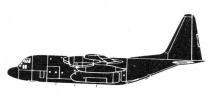Incident Overview

Description
The aircraft, a Boeing 747SP, had landed at Stockholm-Arlanda Airport after a scheduled flight from Damascus, Syria. When taxiing in to the gate the pilots were guided regarding distance and lateral deviations from a display board on the terminal building. The display was programmed by an operator from a handling company. She had received information about the arriving aircraft type from the data system at the airport, where the type code 74L was stated. She was not familiar with this specific code, but presumed it was a standard Boeing 747, which her colleagues also assumed. At the operators panel in the airbridge housing she programmed B747 after have deleted the first version alternative which was B747SP. The reason why 747 was first choice in the versions list, was that there had been accidents earlier at the airport when wrong version had been entered at the displays. A standard B747 is longer than a SP-version, implying that parking is considerably closer to the terminal building. The computer system laser scans the front profile of the parking aircraft to confirm that the correct type is programmed. Some gates at Arlanda have versions of this system that can separate different versions of the same aircraft type (B747 – B747SP). This modification was not implemented at the actual gate. When the aircraft was taxiing in towards the gate the display indicated the type version B747, according to the computer log in the system. During the interview the Commander stated that he earlier had experienced that docking systems had displayed B747, and yet had been correct for a B747SP. The operator supervised the intaxiing and when she realized that the aircraft came alarmingly close to the airbridge housing, she activated the emergency stop button. This was however already activated by the ground staff at the ramp. The top of the left wing struck the under side of the airbridge at the same time as the display indicated “STOP” and a large hole was torn up at the upper side of the wing. Causes: “The accident was caused by an inadequate training programme and deficient safety guidance in respect of the gate operators handling of the docking system. A contributory factor was that safety shortcomings that had been pointed out earlier had not been rectified.”
Primary Cause
Inadequate training and deficient safety guidance regarding gate operator handling of the docking system, stemming from prior safety shortcomings that had not been rectified.Inadequate training and deficient safety guidance regarding gate operator handling of the docking system, stemming from prior safety shortcomings that had not been rectified.Share on:





